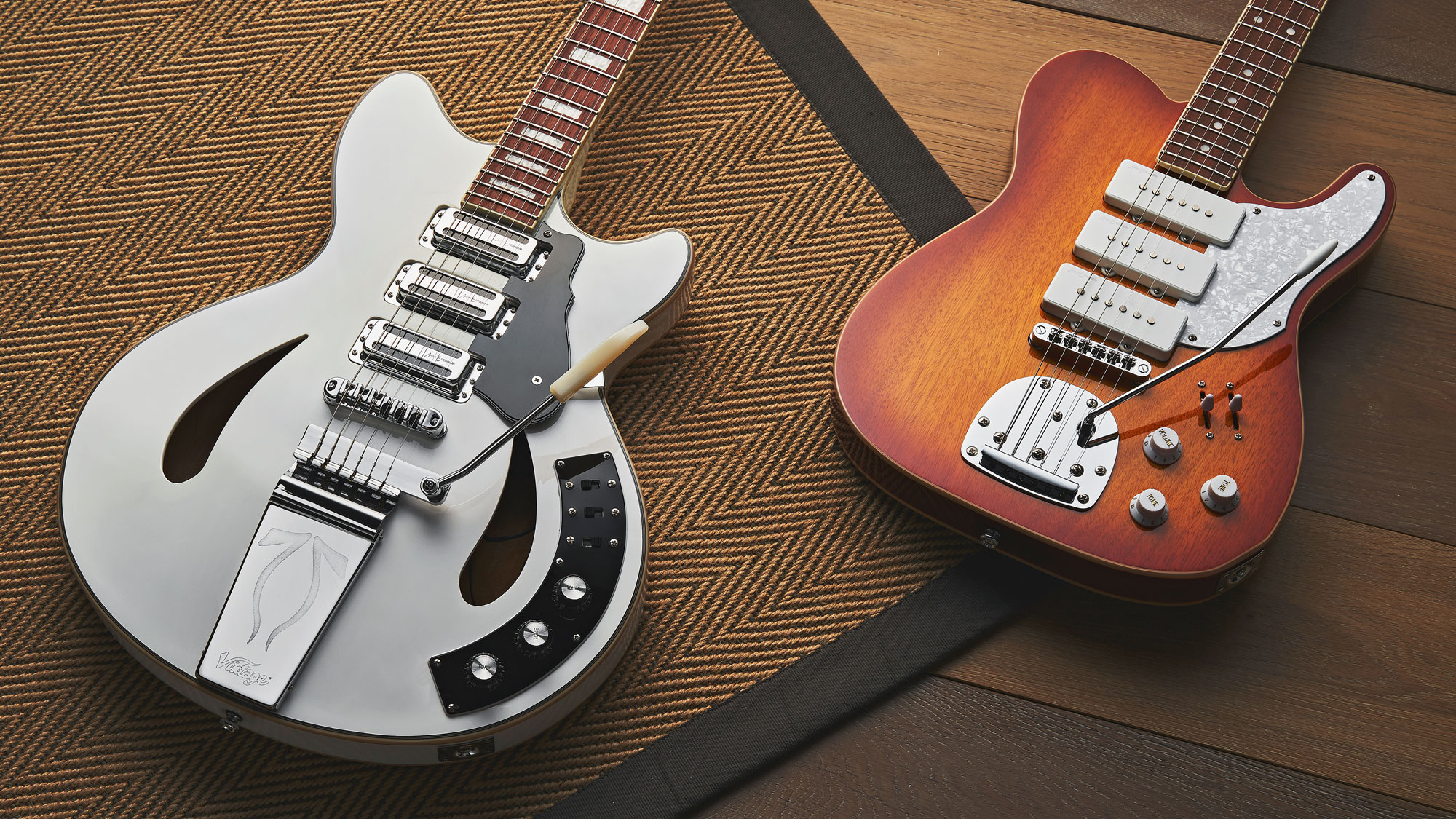Guitar World Verdict
The Custom Supreme is a no-frills jangle machine that’s very nicely voiced. The Trio feels more familiar – a Jazzmaster in Tele dress – but it’s light in weight, has very evocative sounds and a super-smooth vibrato.
Pros
- +
Custom Supreme has neat individual ’60s style.
- +
And a very single-coil-sounding humbuckers.
- +
Flexible switching and tone control setup.
- +
Good builds, and the Trio has a good weight.
- +
Trio has a familiar chassis.
- +
Good-sounding single coils and excellent offset vibrato too.
- +
The Trio’s pickup switching is inspired.
Cons
- -
Custom Supreme is pretty heavy.
- -
It needed a little nut work.
- -
Trio's twin-tone setup is quite subtle.
You can trust Guitar World
If something a little different is what you’re after then this Vintage REVO range will be more than welcome. These aren’t artfully crafted boutique instruments – although a lot of the recipes here are what you might find in that costly, rarified world. But neither are they past ‘pawn shop’ relics that look cool but fall far short of the sort of playability you’d expect from a modern instrument.
While our Trio is clearly based around the original solidbody production electric, with its three Jazzmaster-style pickups and vibrato, it’s far from a direct clone. Meanwhile, the Custom Supreme is inspired by an actual UK-made guitar from yesteryear.
Vintage tells us: “We designed this one based upon a Grimshaw guitar that Pete Townshend played in the ’60s with a modern twist.” That probably late-’50s ‘SS’ model was modded by Pete with a Rickenbacker truss rod cover on the headstock and three Rickenbacker pickups.
Pete is quoted as saying, “I bought the guitar at Ivor Mairants; I’d always wanted one (was it because Joe Brown played one?). At the time, I was used to Rick pickups so when I ran out of Rickenbackers one day I rigged the Grimshaw with the pickups and added the headstock blazer as deception. However, when people asked me what model of Rick it was, I told them it was a Grimshaw. It played beautifully.”
Custom Supreme

Here’s a guitar that will get you noticed on a stage – you’ll feel its presence, too: at 4.44kg (9.77lb), it’s no lightweight. That’s perhaps no surprise as the all-maple laminate body is 405mm (16 inches) wide, 46mm at the rim and around 74mm deep overall, with a substantial-looking maple centre block.
Its outline, though considerably bigger, is rather Les Paul like, with that quite classy upper horn that reminds this writer of one of Josh Homme’s Echopark builds. And while we don’t get the Rickenbacker ‘blazer’ from the modded model it’s inspired by, the trio of ‘toaster’ humbuckers certainly reference Rickenbacker, with those two tear-drop soundholes adding a sprinkling of Gretsch.
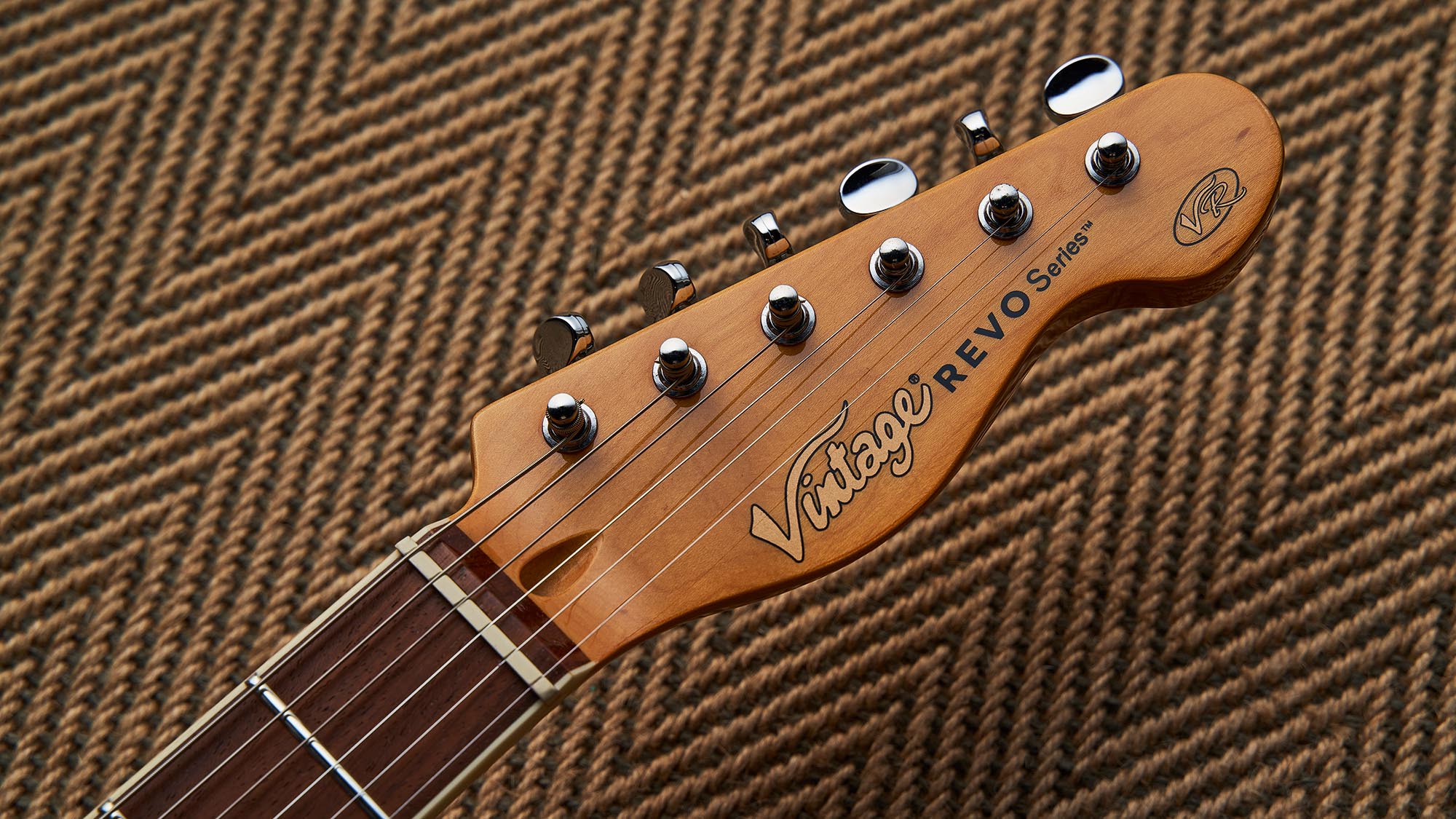
But then there’s the Gibson Maestro-style vibrato adding some show, and, with respect, the control plate looks more like something Vintage has knocked up in its ProShop. The headstock actually looks a bit like Vintage’s standard three-a-side outline, though the block REVO logo, which is repeated on the truss rod cover, lacks the flair of the overall design.
Those ‘toaster’ humbucking pickups are tidily recessed into the body, and the chunkier roller-saddle bridge (a well-used design that has lock-down adjustable saddle blocks) sits quite low on the body.
That large control plate houses three on/off slide switches, a master volume and two tones (labelled ‘tone’ and ‘midrange’ on the control instructions pdf) with knobs borrowed from Gibson. Hmm.
Trio
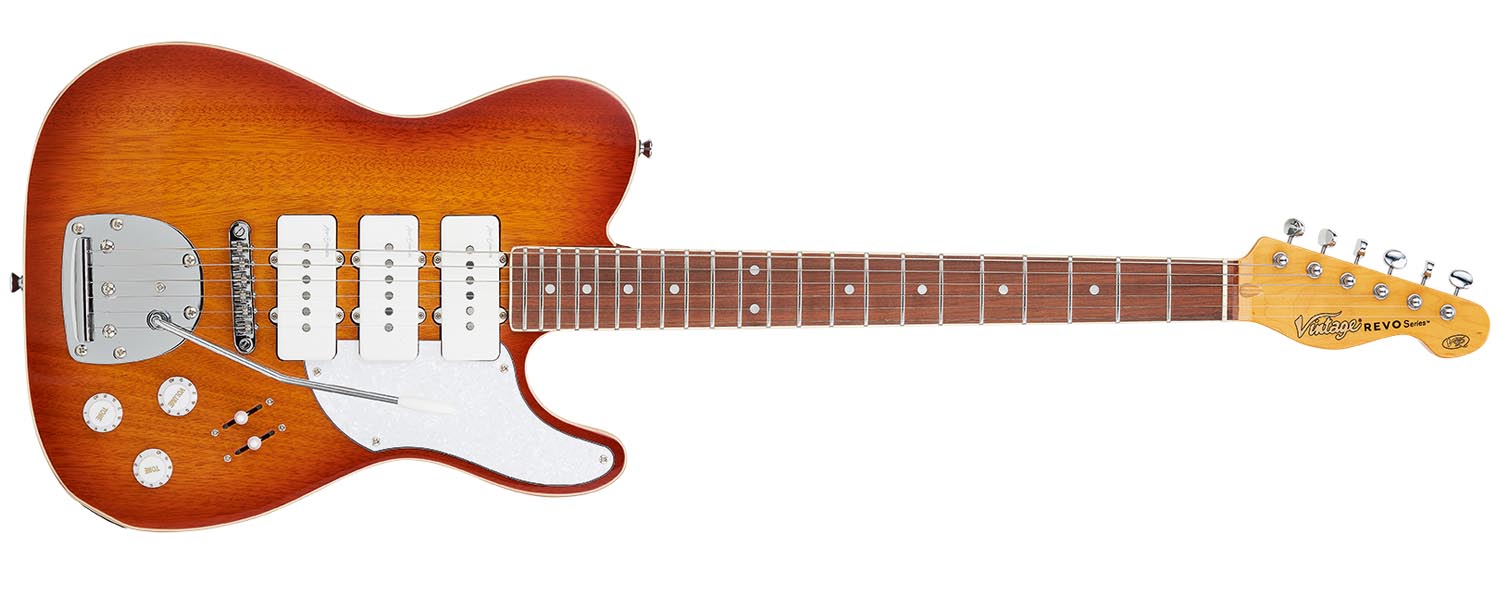
You’d think a T-shape with two Jazzmaster pickups and vibrato would be a decent mash-up, but as you can see we have three pickups here, hence the name. The new REVO range is definitely generous with its pickup complements.
Along with our three-some review models (and the Custom Supreme baritone), the Vision, the Superthin and the more S-style Deluxe also have a trio of pickups. Even more generous is the four-pickup Surfmaster Quad!
Designer Alan Entwistle is also known for some pretty tricky passive circuity, as we see not only on the Custom Supreme but also this Trio
But designer Alan Entwistle is also known for some pretty tricky passive circuity, as we see not only on the Custom Supreme but also this Trio. First off, we have two three-way lever switches. Switch A (closest to the bridge) voices bridge, bridge and neck, and neck in its three positions.
Switch B selects middle (overriding switch A) in its lowest position, in centre position it adds the middle pickup to any of the switch A selections, while in its third upper position it’s out of circuit, leaving just the selections of switch A.
Like the Custom Supreme, we also get three rotary controls – master volume and two tones. The control closest to the output jack is advertised as ‘tone’, while the tone closest to the vibrato is named ‘mid-tone’. That might need a bit more explanation.
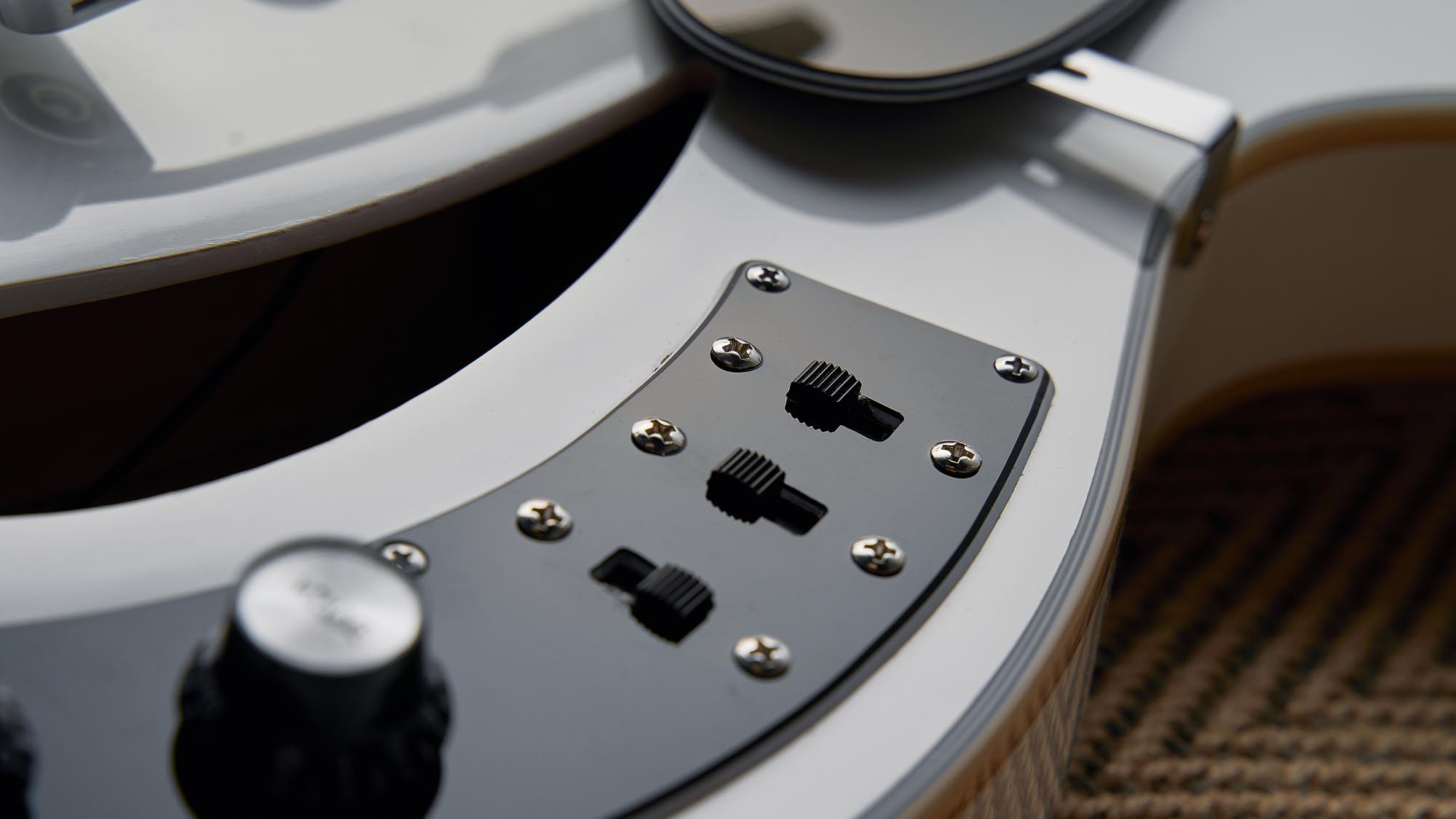
We’ll get to those controls a little later, but the rest of the Trio is pretty tidy. As you’d expect, we have a Fender scale length, and the standard bolt-on maple neck (with skunk stripe) has a nice vintage tint under its glossed back.
The reddy-brown jatoba fingerboard (the same that’s used on the Custom) is cleanly bound, but here we have dot inlays instead of the Custom Supreme’s blocks. Fretwork on both guitars is good, the fret ends sitting over the edge binding, and the Trio uses a similar wide ’n’ low gauge to the Custom Supreme.
The Honeyburst finish of the Trio’s body is well named and we’re told the wood is okoume. However, it does appear that the top and back have a veneer facing as the grain doesn’t match the body core, which is at least two-piece, probably three. Like the Custom Supreme, it’s cleanly double edge-bound with a cream binding and it’s all rather nicely done. Above all, this guitar has a good weight of 3.32kg (7.3lb).
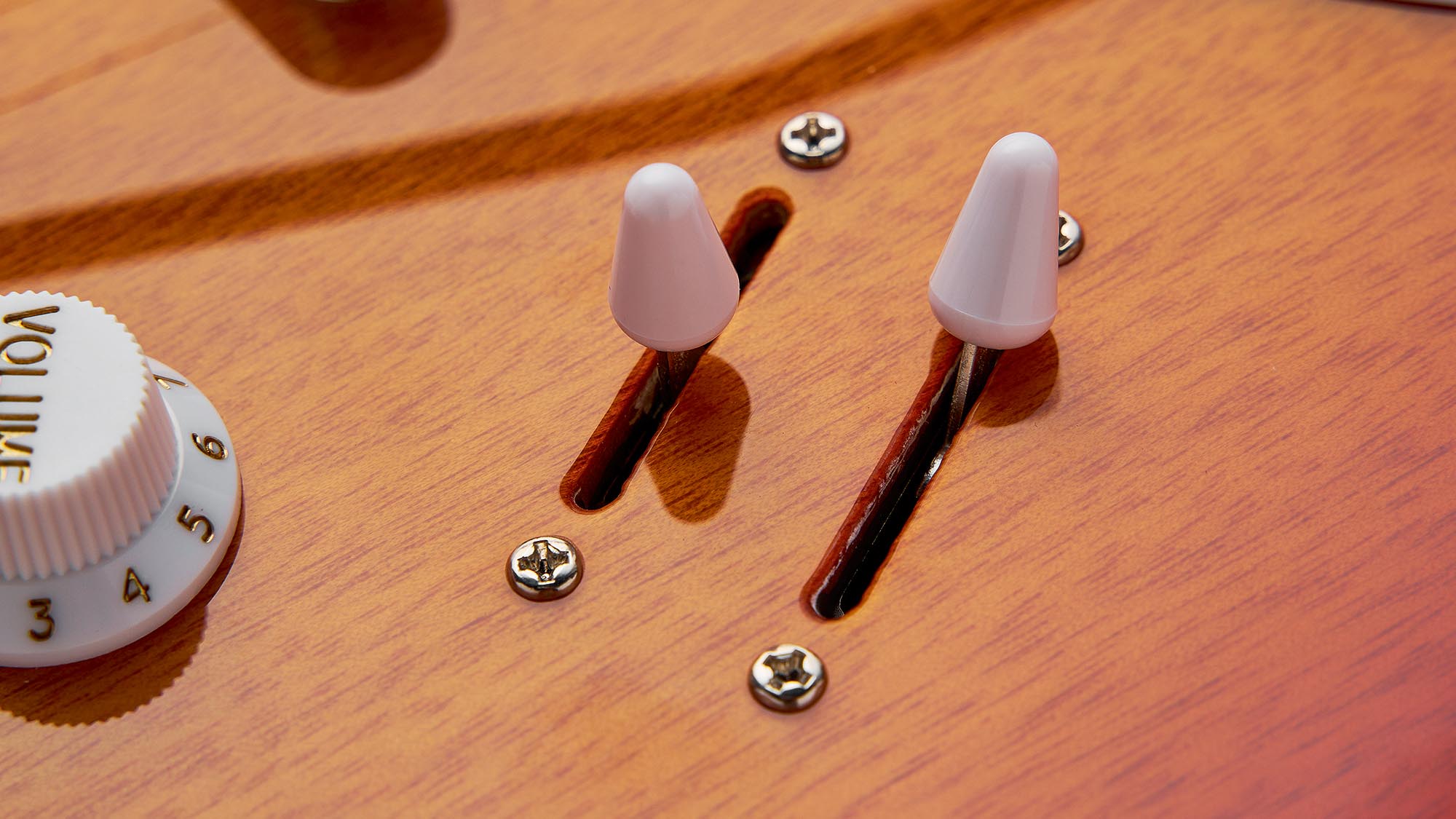
Both the J-style vibrato and its roller bridge tune-o-matic are rather generic but function very well, and the EZ-Lok Wilkinson tuners have dual string-post heights, the lower three for the G, B and E strings, which means you don’t get any string trees.
Feel & Sounds
Okay, we might have two three-pickup-with-vibrato guitars here, but other than that they barely share any similarity. We’ve mentioned the weight differences: the Custom Supreme is a big ol’ bird compared with the much more manageable Trio.
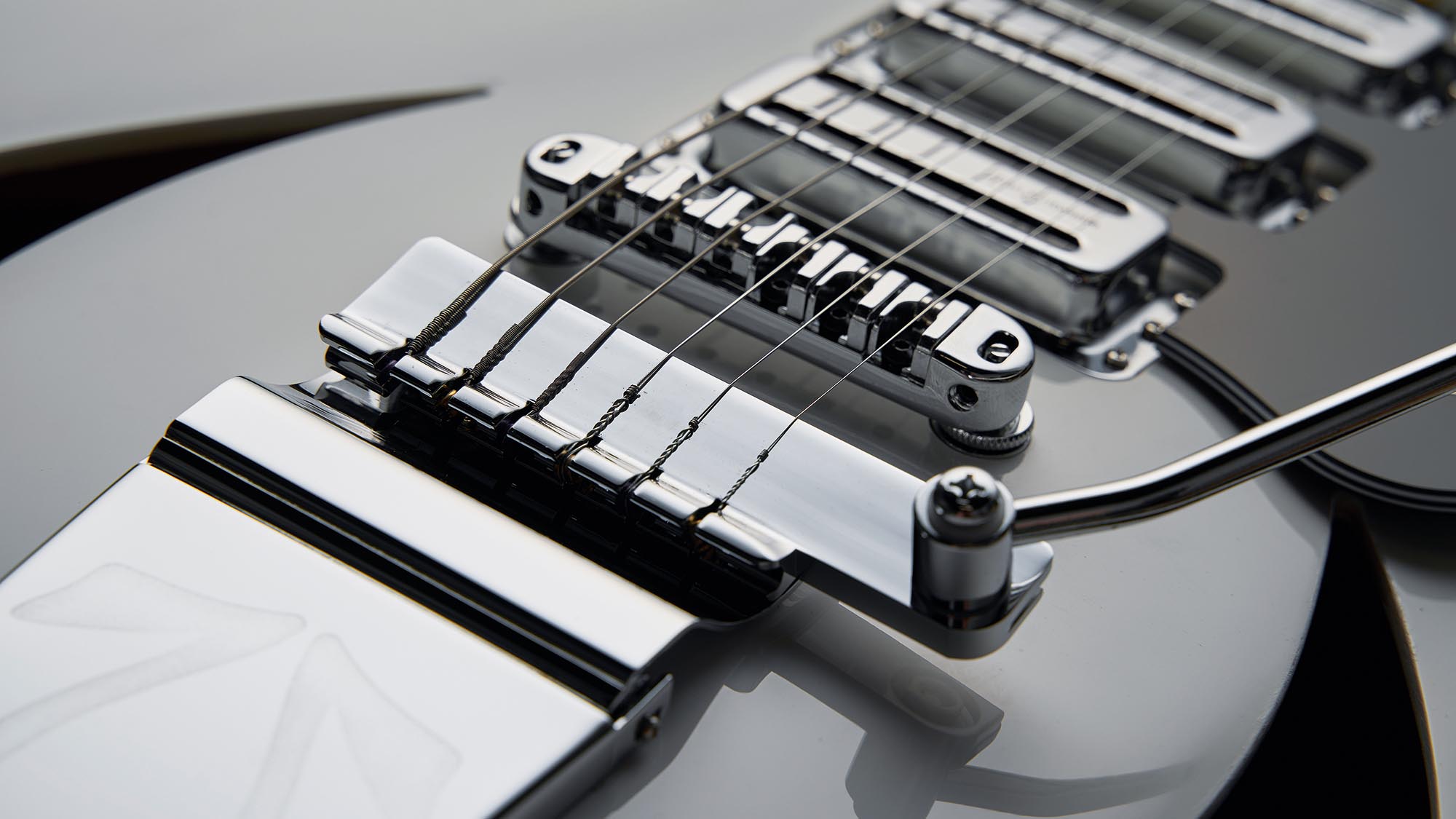
The all-gloss finishes mean there’s less difference between neck shapes than you might expect, though the Custom’s is very slightly wider and deeper with a nut width of 43.9mm (and 35mm string spacing), 21.7mm deep at the 1st fret and 24mm by the 12th.
The Trio’s nut measures 43.6mm (with a string spacing of 35.5mm), 21.4mm deep at the 1st fret and 21.4mm by the 12th. Speaking of string spacing, the Custom’s bridge spread is 50.5mm, the Trio’s is 51.5mm. Both share a similar neck profile, a little more D than C, we’d wager, with a slightly flat back.
The Custom’s acoustic response is quite big, ringing and bold, and the Trio, as you’d expect, is a little lighter in tone and volume with a little ‘offset’ to the response due to the undamped string length behind both the nut and saddles. We’d be tempted to fit a string tree to at least the top two strings here as the response is a little light in sound, but adding a few more wraps around the string posts might improve that anyway.

If you’re after a fire-breathing metal monster you’ve come to the wrong place. Set up a clean amp tone with or without some reverb and/or short delay, and you’re right back in the ’60s. If you want dirt, you’ll need some help from a pedal. The Custom’s voice is very single-coil like; there are good sounds with a balanced midrange and pretty crisp highs. The Trio’s single coil pickups are more mid-scooped with plenty of high-end detail, too.
Not everyone gets on with a three-pickup guitar – the middle pickup can get in the way – and while that’s a personal decision it’s worth pointing out that the Custom’s humbuckers don’t sound like they’re fully potted – there’s a bit of ‘clonk’ when your pick hits the cover.
The three on/off switches on the Custom provide a simple drive, but you need to remember that down is ‘on’ and up is ‘off’, otherwise you’ll get in a mess and quite probably mute yourself. Once you get your head around the dual switches of the Trio, it’s pretty logical and at least you can’t mute the guitar.
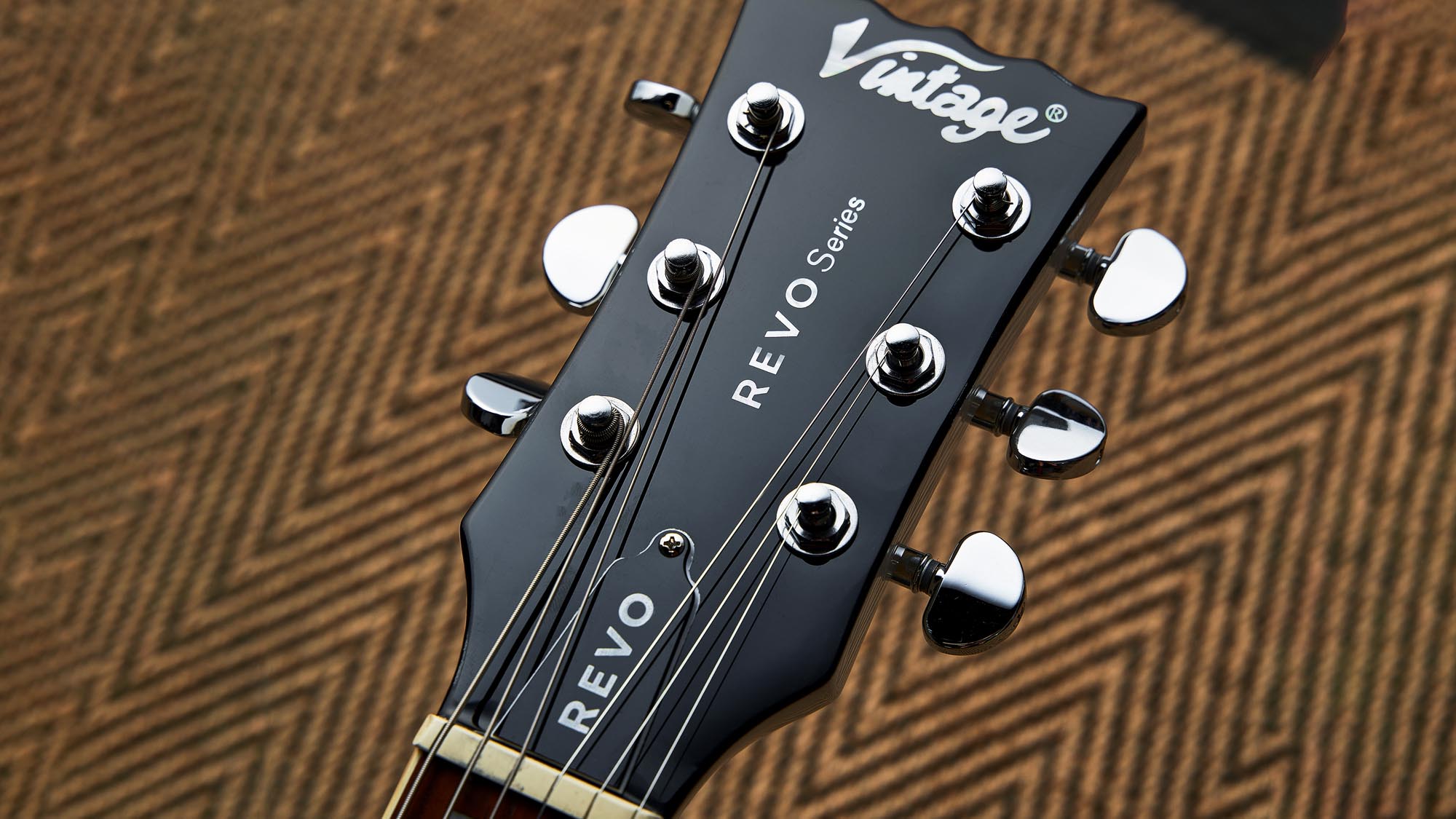
The Custom’s two tone controls? Well, irrespective of what Vintage says, the first tone (the centre of the three knobs) thins the sound as it’s rolled back, like a pretty wide mid/bass cut. Fully off with neck pickup engaged, it sounds more like the bridge pickup. The lower tone control is a more standard treble roll-off.
As to the Trio’s controls, both tones work in all switch positions and sound like two standard tone controls with, we’d guess, slightly different value capacitors. The tone nearest the vibrato seems to only pull back the upper high-end, and even the second tone barely sounds muddy pulled back.
These are subtle, but they do help to tame the potential brightness, particularly with some raunchier pedals in play. The overall T-style feels a bit more like home than the much larger Custom Supreme, too.
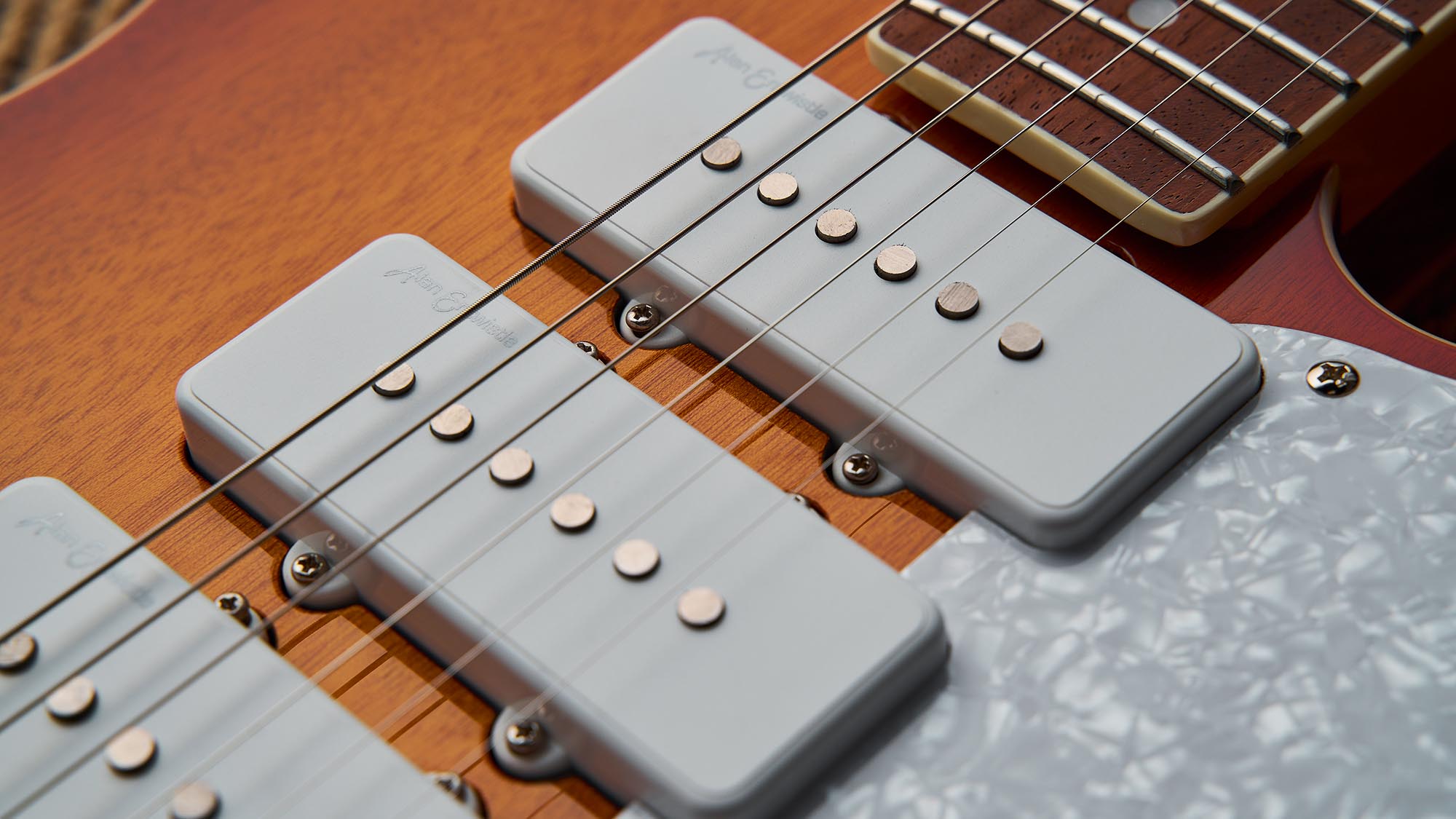
Aside from a few ‘new guitar’ niggles (the Custom’s nut needed a little work so the strings came back in tune, and the pickup heights needed a little evening out), the performance out of the box of both guitars is pretty impressive.
There’s perfectly good waggle from the Custom’s Maestro-style vibrato, and not for the first time the Trio’s J-style vibrato (albeit without a stop function) is wonderfully smooth with quite a large range – always good for those Spaghetti Western or spy movie themes, or frankly some pretty out‑there mangling with plenty of fuzz and gain beloved of the offset brigade.
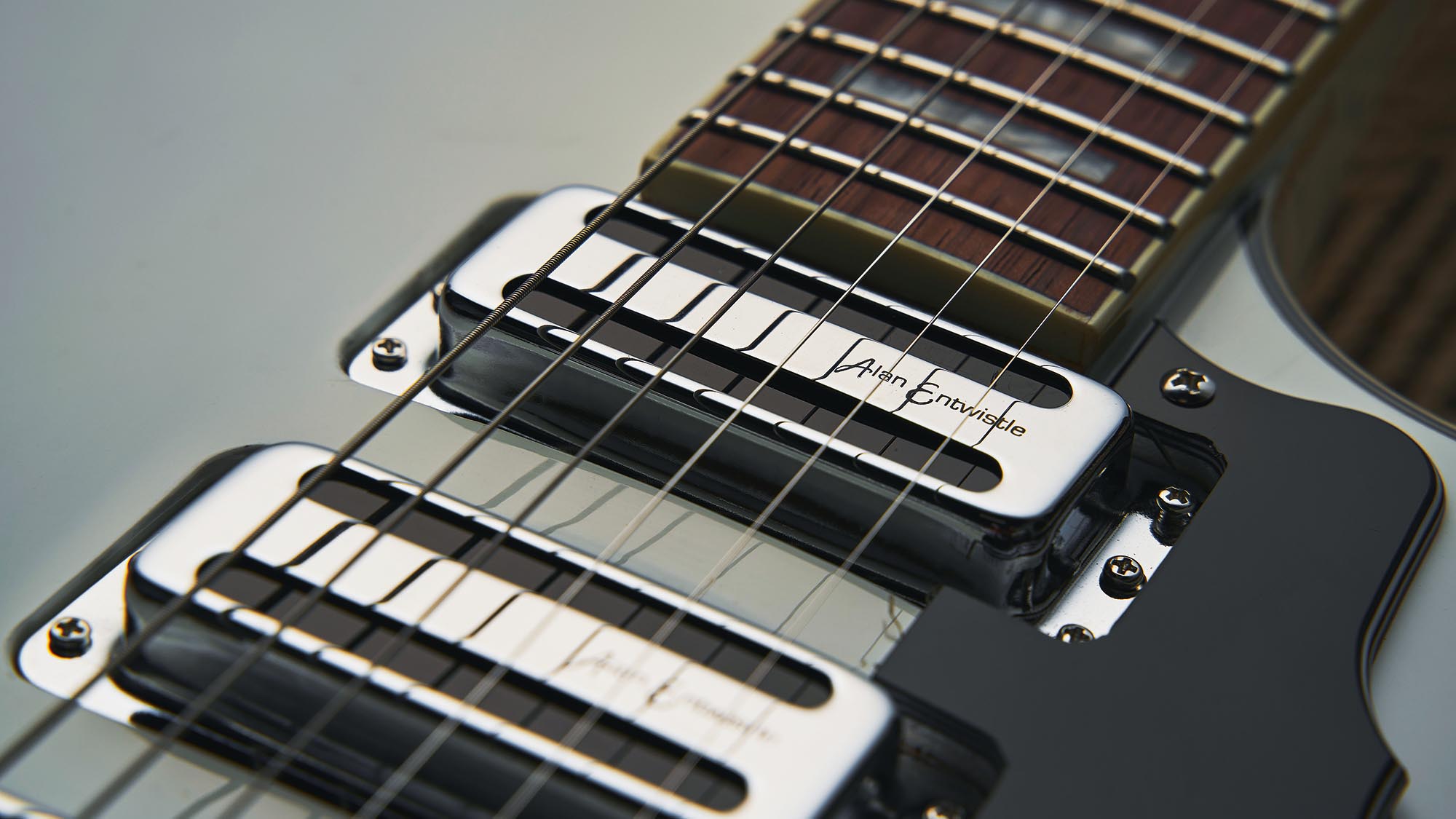
Verdict
It feels like we’ve been in an episode of The Twilight Zone and, to be honest, we wouldn’t mind being in a few more. The Custom Supreme is a no-frills jangle machine that’s very nicely voiced.
The mid/bass cut tone control means you can really push the percussive attack, or lighten the body of sound: perhaps not essential, but it adds to the slightly off-kilter retro ’60s style. Our sample is heavy and yet it feels very businesslike on a strap.
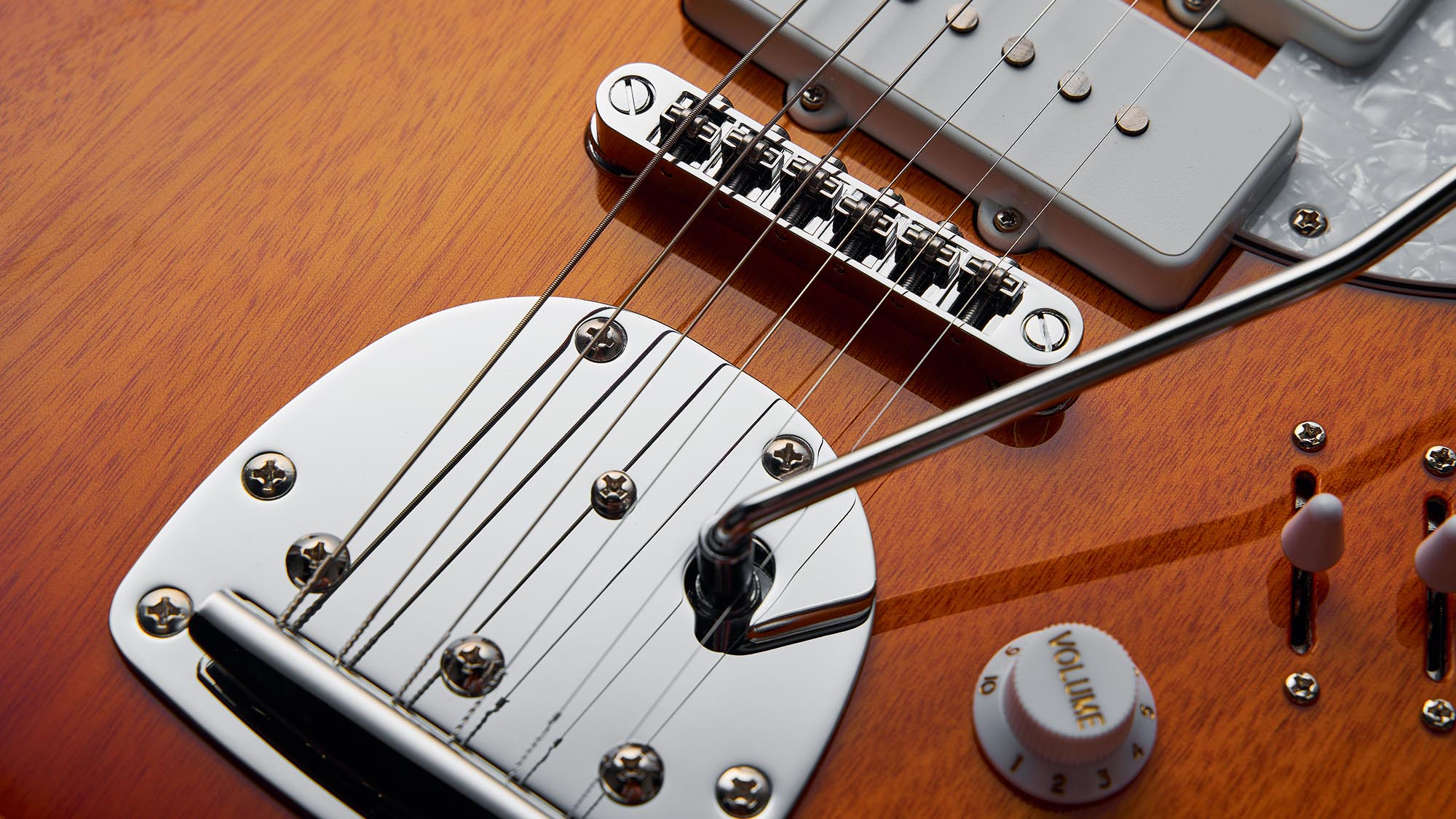
There’s little doubt that the Trio feels more familiar and the design is quite inspired. As a Jazzmaster in Tele dress, it’s light in weight, has very evocative sounds and a super-smooth vibrato, and although the dual tone control setup is pretty subtle, those two pickup selection switches work very well: you can drive this as a twin or trio very easily.
But we’ve only dipped a toe in the REVO waters – there are another 13 models to consider! If you’re bored by the usual suspects, you’ll have some serious fun here. What’s your poison?
Specs
Vintage REVO Series Custom Supreme

- PRICE: £749
- ORIGIN: China/Vietnam
- TYPE: Double-cutaway semi‑acoustic electric
- BODY: Laminated maple
- NECK: Maple, glued-in
- SCALE LENGTH: 629mm (24.75”)
- NUT/WIDTH: Graph Tech
Nubone XL/43.9mm - FINGERBOARD: Bound jatoba, pearloid block inlays, measured 254mm (10”) radius
- FRETS: 22, medium jumbo
- HARDWARE: Maestro-style vibrato, roller saddle tune-o-matic-style bridge, unlogo’d enclosed tuners – nickel/chrome
- STRING SPACING, BRIDGE: 50.5mm
- ELECTRICS: 3x Alan Entwistle RT64 toaster-style humbuckers, individual slide switch pickup
on/off, master volume, tone 1 (mid/bass roll-off), tone 2 (standard treble roll-off) - WEIGHT (kg/lb): 4.44/9.77
- OPTIONS: No
- RANGE OPTIONS: Custom Supreme Baritone VI (£599) with 3x toaster-style pickups and offset vibrato. See REVO gallery over the page
- LEFT-HANDERS: Not this model
- FINISHES: Arctic White gloss (as reviewed)
Vintage REVO Series Trio
- PRICE: £449
- ORIGIN: China/Vietnam
- TYPE: Single-cutaway electric
- BODY: Okume
- NECK: Maple, bolt-on
- SCALE LENGTH: 648mm (25.5”)
- NUT/WIDTH: Graph Tech/43.6mm
- FINGERBOARD: Bound jatoba, pearloid dot inlays, measured 241mm (9.5”) radius
- FRETS: 22, medium jumbo
- HARDWARE: Vintage offset vibrato, roller saddle tune-o-matic-style bridge, Wilkinson E-Z Lok tuners - nickel/chrome
- STRING SPACING, BRIDGE: 51.5mm
- ELECTRICS: 3x Alan Entwistle J90A single coils, dual 3-way lever pickup selection switches: switch A (neck, neck and bridge, bridge), switch B (no function, adds middle pickup, middle pickup only), master volume, 2x tones with different capacitors
- WEIGHT (kg/lb): 3.32/7.3
- OPTIONS: No
- RANGE OPTIONS: Mid-Line (£499) is a Cabronita T-style semi-hollow. See REVO gallery over the page
- LEFT-HANDERS: Not this model
- FINISHES: HoneyBurst (as reviewed), Arctic White, Green/Yellow Burst
- CONTACT: John Hornby Skewes

Dave Burrluck is one of the world’s most experienced guitar journalists, who started writing back in the '80s for International Musician and Recording World, co-founded The Guitar Magazine and has been the Gear Reviews Editor of Guitarist magazine for the past two decades. Along the way, Dave has been the sole author of The PRS Guitar Book and The Player's Guide to Guitar Maintenance as well as contributing to numerous other books on the electric guitar. Dave is an active gigging and recording musician and still finds time to make, repair and mod guitars, not least for Guitarist’s The Mod Squad.
“It holds its own purely as a playable guitar. It’s really cool for the traveling musician – you can bring it on a flight and it fits beneath the seat”: Why Steve Stevens put his name to a foldable guitar
“Finely tuned instruments with effortless playability and one of the best vibratos there is”: PRS Standard 24 Satin and S2 Standard 24 Satin review
